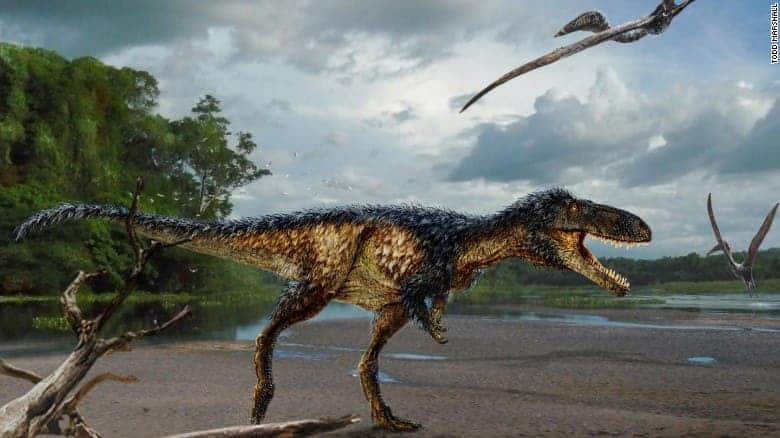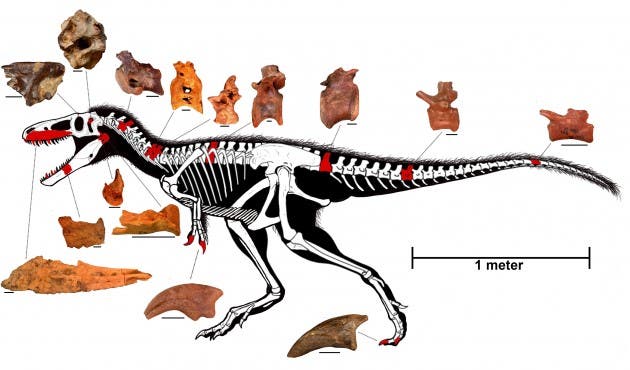T. Rex is one of the most popular dinosaurs, for good reasons too. It was one of the biggest carnivorous dinosaurs to walk the planet, and a fierce looking one to boot. Though its laughable two-fingered forearms were puny, the rest of its body was built for slashing pray: a huge skull fitted with razor-sharp teeth which lent one of the most powerful bites ever, powerful thighs and tail that allowed the dinosaur to run at up to 25 mph, and a big overall body which rendered it immune to other predators. Essentially, it grew its way to the top of the food chain. To get there though, T-Rex first had to evolve a big brain with keen senses, a new research suggests.

Artist impression of Timurlengia euotica in its natural environment 90 million years ago. Credit: Todd Marshall
Tyrannosaurus rex was big, but its predecessors were small. The first tyrannosaurs, which were human- to horse-size, originated about 170 million years ago during the mid-Jurassic. Though lacking in stature, these little tyrannosaurs had advanced brains and advanced sensory perceptions, including hearing that would put any of us to shame, says Dr. Steve Brusatte from the University of Edinburgh’s School of GeoSciences.

Reconstructed skeleton of “Timurlengia euotica” with discovered fossilized bones, highlighted in red. Credit: t Proceedings of the National Academy of Sciences.
Brusatte and colleagues identified a new dinosaur species called Timurlengia euotica, which lived 90 million years ago and was an ancestor to T. rex and other tyrannosaurs. T. euotica, which was unearthed in Uzbekistan, fills a 20 million year gap in the fossil records. The analysis suggests “only after these ancestral tyrannosaurs evolved their clever brains and sharp senses did they grow into the colossal sizes of T. rex,” Brusatte said.
Previously, researchers weren’t sure how T-rex evolved into such cunning, yet massive hunters. Though smaller than those of T-rex, T. euotica’s skull and brain suggest very sharp senses and a powerful brain for its size, CT scans revealed. Since T-rex predecessors were already pretty apt cognitively, the logical explanation is the dinosaurs first had big brains, then worked on brawn.
“New discoveries like this show that there is still so much to be discovered about the history of dinosaurs,” says Hans Sues, a scientist at the Smithsonian’s National Museum of Natural History, and one of the authors of the paper. “It’s not every day that you find a new tyrannosaur.”
Findings appeared in PNAS.









